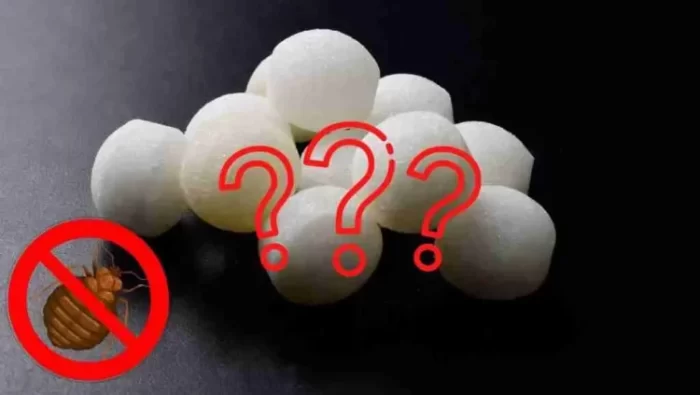Camphor is a waxy, white or transparent solid that has a strong aromatic odor. It is found in the bark and wood of the camphor tree (Cinnamomum camphora), a large evergreen tree found in Asia. Camphor has been used for centuries in religious ceremonies, as a food flavoring, and as a natural pest repellent. More recently, research has confirmed camphor’s ability to repel and even kill insects.
Table of Contents
Understanding Camphor: Origins and Traditional Uses
Camphor trees are native to East Asia but are now grown around the world. The aromatic camphor is extracted from the bark, leaves and wood of the tree then purified by sublimation. When solid camphor is heated, it transforms directly into a gas. The gas is then cooled and condensed back to solid camphor crystals with a strong, persistent fragrance.
Ancient Egyptian, Chinese and Hindu societies used camphor oil in ceremonial offerings and to purify sacred spaces. Camphor’s spiritually cleansing properties translated to traditional medicine in these cultures too. Practitioners used the oil, powder or wood chips to treat respiratory illnesses and fever. The traditional Indian medical system, Ayurveda, also utilized camphor to balance the body and cure fungal infections.
Early Arab traders controlled rare camphor exports out of Southeast Asia. But its medicinal value and divine aroma created strong international demand. By the 13th century, Venice became the epicenter for distributing camphor across Western Europe. It became a common place cure-all medicine and signified cleanliness. Lumps of solid camphor were even worn on the bodies of plague victims with the hope of preventing infection.
Modern Research into Camphor’s Repellent and Insecticidal Abilities
In recent decades, laboratory research has sought to better understand camphor’s abilities as an insect repellant and toxin. The chemical compounds that give camphor its strong scent appear pivotal to repelling insects. Additionally, ingesting or inhaling camphor has been shown to overstimulate an insect’s nervous system. With certain concentrations and exposure times, camphor becomes fatal to insects and other arthropods.
A 2011 study published in the Journal of Entomology confirmed camphor’s repellent effect on adults of six insect species. Tribolium castaneum beetles, for example, displayed avoidance behaviors within just 10 minutes of exposure. Camphor concentrations as low as 2.33 ng/cm2 significantly repelled 90% of this pest. Additionally, studies have shown substances emitted from camphor trees effectively repel mosquitoes and kill larvae.
When directly ingested or inhaled, camphor has also been shown to negatively impact insects’ nervous and respiratory systems. The functioning appears to deteriorate until the insect dies, though specific mechanisms are still being explored. In toxicology studies, camphor-based products induced knockdown and toxicity symptoms in cockroaches, ants and aphids. And 100% mortality was achieved for each with only minor differences in concentration thresholds.
How to Use Camphor at Home
Fortunately, you don’t need pure chemicals or lab equipment to leverage camphor’s pest repelling properties at home! Camphor extracted from wood is commonly sold in easy to use forms:
Solid blocks – Familiar camphor blocks release the aroma into the air over time. Use open containers to place camphor safely out of reach in cupboards or closets.
Sprays – Dilute camphor oil into a spray bottle with water and use on exposed surfaces. This lets you directly treat curtains, shelving, mattresses and furniture in a targeted way. Practice caution with sprays and ventilate the space appropriately after use. Avoid surfaces that may transfer to skin or food when wet.
Powder – For severe bed bug or flea issues, powder forms allow you to dust camphor into the crevices of floorboards and baseboards. Outside, sprinkle around door frames and window sills where pests may enter. Reapply monthly for preventative protection.
Which Insects Does Camphor Repel and Kill?
While camphor shows efficacy against a wide array of pests, it seems to work especially well against these common household intruders:
Clothes moths
Carpet beetles
Silverfish
Cockroaches
Ants
Bed bugs
Mosquitos and larvae
Flour beetles
Fruit flies
Research also supports camphor’s repellent action against ticks and mites. Further investigation is needed, but camphor shows early potential for natural protection from these biting arachnids when applied to skin, clothing or accessories.
Cautions When Using Camphor at Home
Camphor overexposure carries some risk for humans and pets. Very high doses can cause poisoning, seizures, liver damage or even death. Long term dermal exposure may elevate risks of health issues too. Strictly follow dosages listed on any camphor product. Also consider:
– Never ingest camphor, apply to open wounds or use full strength on skin/clothes
– Use gloves and ventilate spaces during camphor application
– Store tightly sealed packages up high, away from children and pets
– Reseal or remove open camphor blocks once scent dissipates
– Avoid use if pregnant, breastfeeding or managing health conditions
Employ special care around children and pets. The strong aroma serves to naturally deter them, but ingestion of camphor could be fatal. Contact a poison control center if major or prolonged exposure is suspected.
The Bottom Line
Camphor’s use as an insect repellent and botanical pesticide extends back thousands of years. With modern research methods, we now better understand camphor’s abilities and its risks. Wise precautions allow us to leverage camphor’s safety and efficacy when dealing with insects. Volunteering camphor for natural home protection again aligns with long-standing tradition.

With over 5+ years of experience in pest control and a PhD in Entomology, our author brings a blend of scientific knowledge and practical expertise to Pestifier.com. Passionate about creating pest-free environments, they provide effective tips and strategies for managing and preventing pest infestations. Connect on Facebook for the latest updates and insights.

